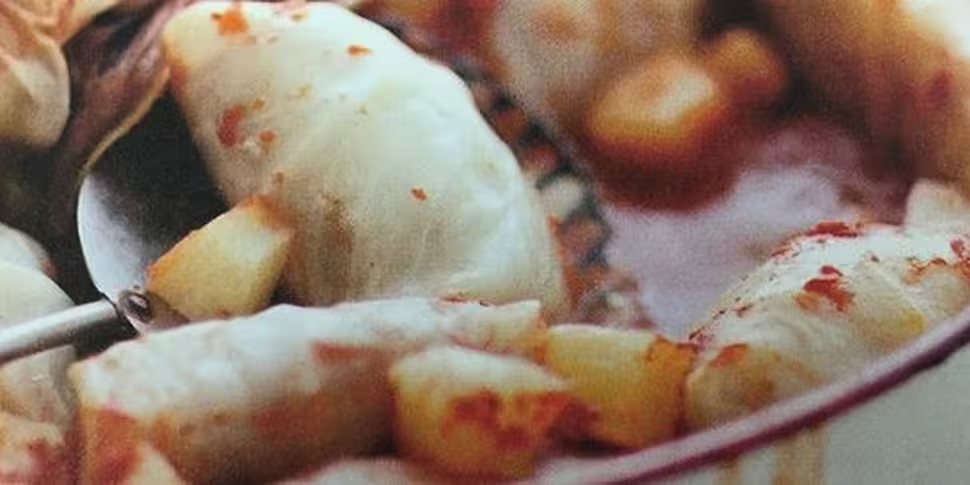Antarctic cuisine is not typically served up by foodies around the world, but the role of food and flavour is of serious importance to explorers holed up on the southern-most tip of the planet.
An army marches on its stomach, and those living in the extreme conditions of the Antarctic need to have a full and sated stomach to carry out their research. In the mid 90s, volunteers at a Russian base carrying out environmental research cleaned up the debris of previous expeditions on a small island 120 miles off the coast of the Antarctic Peninsula. And from their tireless work and pangs of hunger came Wendy Tusler and Carol Devine’s The Antarctic Book of Cooking & Cleaning.
As a cook whose role is to feed empty stomachs in some of the most sparse conditions in the world, Tusler has to work with what ingredients can be stored to make the most of her cooking. The volunteers of the Antarctic clean-up crew didn’t chow down on penguin stews like Victorian-era explorers marooned on the ice. But the book offers an honest and frank look at what it’s like to feed large groups of people, making use of whatever you’ve got to hand, and blending food styles from around the world while at the remotest place on the planet.
----------------------------------------------------
The Antarctic Book of Cooking & Cleaning is a fascinating look at the harsh beauty and fragility of the icy continent, and the impact human presence has on it. You can listen back to Carol Devine’s interview with Sean Moncrieff at the bottom of this post, and read the recipe for Ukrainian Cabbage Rolls below:
Thank goodness for Patricia, the dear Ukrainian woman who helped look after my family when I was growing up. She never actually taught me how to make her cabbage rolls, but when I felt compelled to give them a try in Antarctica I found I could because I’d watched her so many times. There is a strong argument for letting kids get underfoot in the kitchen here.
It was my mother’s idea to top them with pineapple. The sweetness was a surprise to the Russians when I shared a batch with them – they claimed Russian food was not as “flavourful.”
2 heads green cabbage // 4 onions // 6 cloves of garlic // 3 tablespoons butter // ¾ cup long-grain rice // 2 cups water // 2 pounds lean ground beef // salt // pepper // 1 can tomato juice 948 ounces) // 1 can crushed or chopped pineapple (14 ounces)
To prepare for blanching the cabbage, put a large pot of salted water to boil. You are also going to want to have large bowls full of ice water ready (the sink is even better) and some tea towels laid out to drain the leaves.
Core the cabbages and remove any tired-looking outer leaves while you are waiting for the water to boil. Blanch the cabbages one at a time for 5-8 minutes until the leaves are softened. Use a slotted spoon to remove the cabbage from the pot and then immerse in the ice water.
When the cabbage is cool enough to touch, working from the core end, gently peel back the leaves and place on the tea towels to drain. Pop the cabbage back into the boiling water for 2-3 minutes when the leaves start to resist. You should be able to pull of 12-15 leaves before they become too difficult or small to remove. Reserve some leaves to cover the rolls in the pan as well.
Repeat with the second cabbage. Before moving on to the filling, smash the coarse veins on the larger leaves with the palm of your hand or a mallet. This will make them easier to roll.
Mince the onions and garlic. Melt the butter in a saucepan over medium heat and cook the onion and garlic until they are quite soft. Add the rice and cook for a minute or so, stirring to coat each grain with butter. Pour in the water and bring to a boil. Reduce the heat to medium-low, cover and simmer until the liquid is absorbed and the rice is tender, about 20 minutes.
Scrape the rice mixture into a large bowl and let cool for 5-10 minutes. Stir in the ground beef, salt and pepper, using a fork at first to distribute the rice, then switching to your hands to really bring thins together.
Have a roasting pan and lid ready. Lay out 24 to 30 cabbage leaves.
Scoop about ¼ cup of the meat mixture onto the centre of each leaf, making adjustments to the quantity based on the leave size and condition. Using your hands, press the filling together. Fold the top and two sides of the leaf over the filling, then roll ip from the bottom to form a neat bundle. Place seam side down into the roasting pan arranging half of the cabbage rolls in the first later and nestling ones on top.
Pour in the tomato juice, making space between the rolls as needed so that it makes its way to the bottom. Top with the pineapple – the chunks are nicer looking, but crushed pineapple adds more flavour. Cover with the reserved leaves to prevent the tolls from scorching. Cover and back at 350°F until tender, about 2 hours. I don’t think cabbage rolls need to be served with anything – eat them on their own until you’ve had your fill. They keep for up to a week in the refrigerator. Makes enough for 15.











